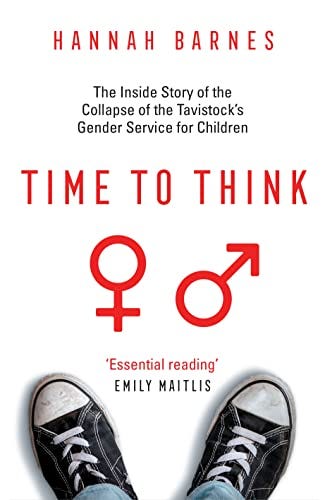No Time To Think: How The Cult Of The 'Trans Child' Took Over At Tavistock
A review of 'Time to Think' by Hannah Barnes
Hannah Barnes, Time to Think: The Inside Story of the Collapse of the Tavistock’s Gender Service for Children. Swift Press, 2023. 557 pages. (Amazon) (Barnes & Noble)
When Bernard and Terry Reed, the founders of GIRES, lobbied for parents to have faster access to drugs and surgeries to sterilize their gender nonconforming children in 1997, they put suicide risk at the center of their argument.
Unless children received puberty blockers on demand, they claimed, suicide was inevitable.
The Reeds presented no evidence for this claim — indeed, no one ever has, because the “trans suicide” myth is purely a form of emotional blackmail. It has zero validity. Suicide rates among “trans kids” are the same as other gender nonconforming kids, and when such a tragic event does happen, it can be at any stage of “transition.”
In other words, hormones and surgeries are categorically ruled out as a “cure for trans suicide.” Otherwise, suicide rates would go down. In fact, our best long-term study out of…
Keep reading with a 7-day free trial
Subscribe to The Distance to keep reading this post and get 7 days of free access to the full post archives.



